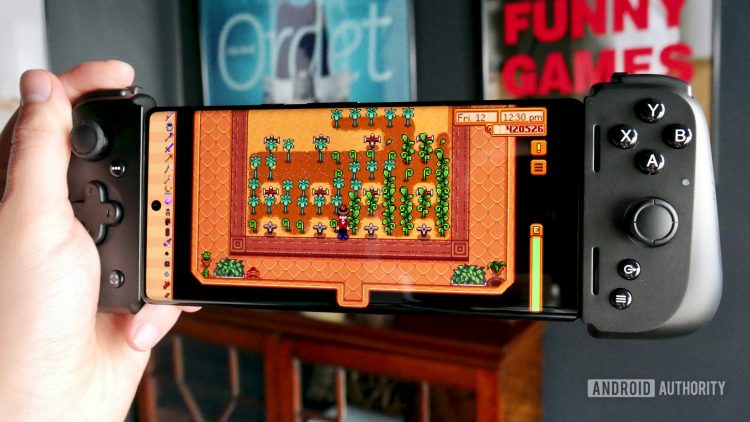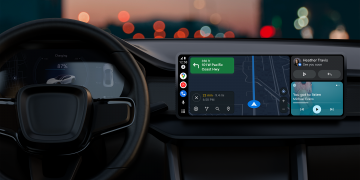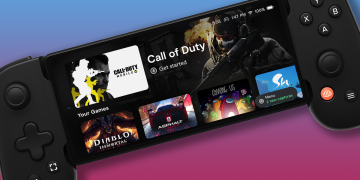The Razer Kishi V2 loses the portable factor of its predecessor but otherwise builds on the best bits of the Kishi V1 with improved ergonomics, better buttons and triggers, and a more universal fit. The Kishi V2 is a fantastic way to transform your phone into a handheld gaming machine, though the undercooked companion app and continued omission of a headphone jack leave the door open for new challengers to do better.
The original Razer Kishi rode high on the rising wave of mobile gamepads that made the (quite fair) assessment that simply slapping a phone into a separate grip attached to a console-size controller perhaps wasn’t the most elegant alternative to touchscreen-only play. While it wasn’t Razer’s first rodeo with the form factor, its portable, split-pad approach was one of the best.
Since then, however, the “phone sandwich” style has evolved, leading to clamp-based telescopic controllers — a category with a number of strong rivals all gunning for the top of the scoreboard. Can Razer’s pivot towards this new — yet increasingly familiar — design and a much-vaunted accompanying software suite shoot the Razer Kishi’s second iteration into the lead? Find out in Android Authority’s Razer Kishi V2 review.
What you need to know about the Razer Kishi V2
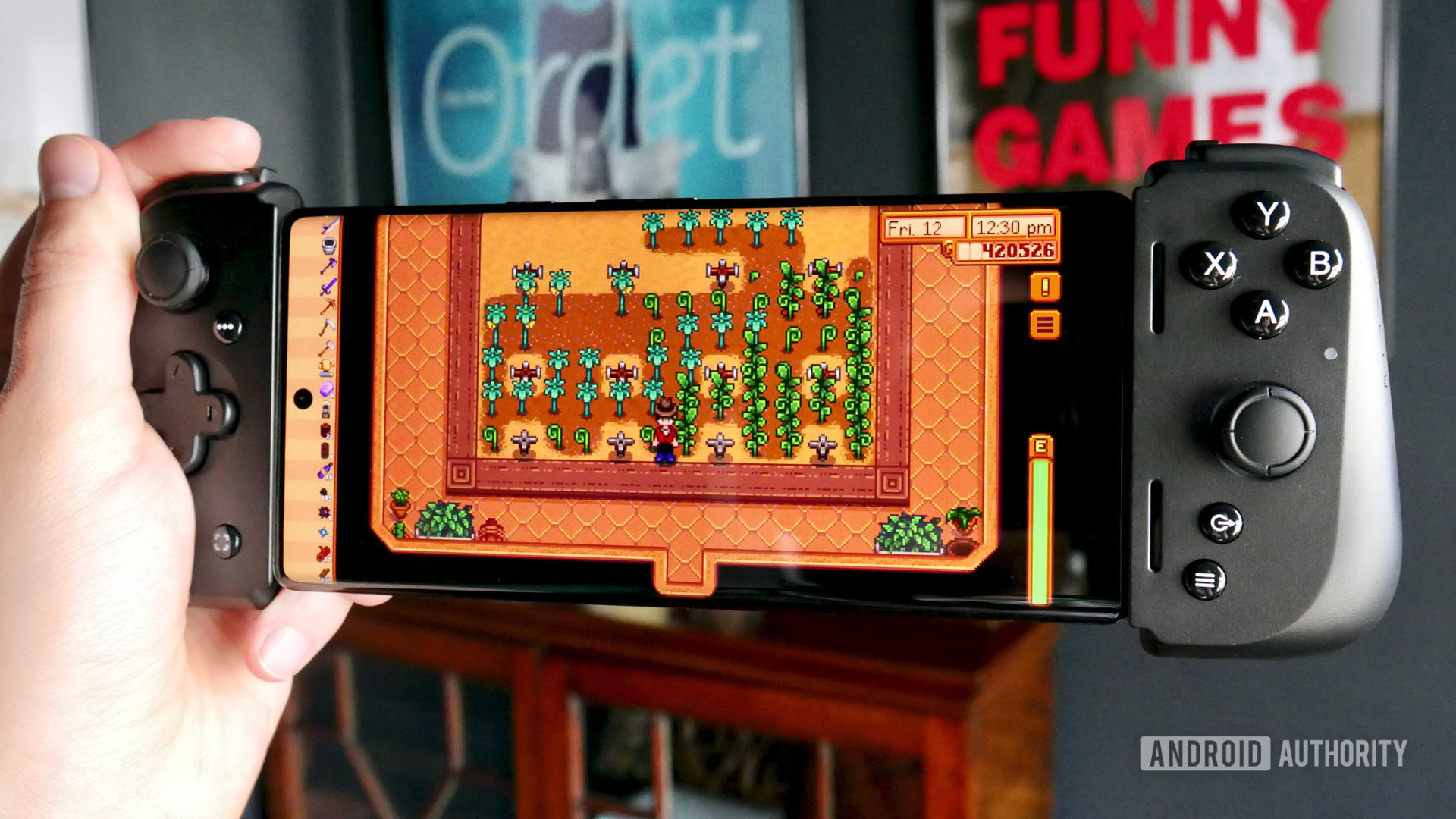
Oliver Cragg / Android Authority
- Razer Kishi V2: $99 / £99 / €119
Razer began properly dabbling in mobile gamepads with the Junglecat back in 2019, which utilized a pair of Nintendo Joy-Con-like controllers attached to a bespoke case. The only problem? It was only compatible with three phones in North America, one of which was the brand’s own ill-fated Razer Phone 2.
The first-generation Razer Kishi righted the wrongs of the Junglecat with a similar idea but a more universal execution. In partnership with Gamevice, the Kishi wedged your phone in place via a USB-C port, a stretchy rubber band, and a backplate. It was also collapsable for easy storage.
So what’s new for the Kishi V2? For starters, it’s $20 more expensive than the V1, though it’s the same price as the first model’s officially licensed Xbox variant. The biggest change, though, is the rear bridge mechanism that acts as an extendable spine running adjacent to the back of your phone, with the latter then clamped in place through mild pressure. If that sounds similar to the setup popularised by the Backbone One, well, that’s because it’s essentially identical.
Razer has added some extra input options over the original Kishi, including programmable mini-bumpers and a dedicated share button. It also made a few general ergonomic tweaks, and swapped out several of the previous model’s membrane buttons for microswitches, a move Razer says was inspired by its Wolverine V2 controllers.
The Kishi V2 has been retooled with a bridge-style design, improved buttons, and a new companion phone app.
The gaming firm claims several design tweaks combined with two sets of rubber inserts make the Kishi V2 compatible with more Android phones than ever, and will even fit some phones that have cases on, providing the case is thin enough. Your mileage will vary greatly depending on what phone and case you have. In my testing, I did manage to squeeze a few smaller phones in with cases still attached, though the USB-C connector wouldn’t quite extend far enough to fit my daily driver — a Google Pixel 6 Pro in a slim Spigen case. The rubber inserts are also a bit tricky to swap in and out, and without any included carry case for the controller itself, I’m convinced they’d be very easy to lose.
Otherwise, the Razer Kishi V2 looks to carry on where the V1 left off. It’s a handy controller for playing controller-optimized mobile games, emulated retro titles, or streamed games remotely or via the cloud, all with ultra-low latency due to the direct USB-C connection and with no need to charge it up as it feeds off your phone as a power source.
Razer’s other big play for the Kishi V2 is the brand new Razer Nexus app, which acts as a one-stop portal for all your Kishi-compatible mobile games. You don’t need it to use the V2 out of the box as it plugs and plays just fine, but it’s also the only way you’ll get any future firmware updates for the V2, and is essential for using the screenshot button and remapping the programmable mini-bumpers.
The Razer Kishi V2 comes in a single black color and is available to buy from Razer’s official store, Amazon, and other major online retailers. Due to the USB-C connector, the version currently available to buy is only compatible with Android phones. A Kishi V2 model for iPhone users is listed on Razer’s website and is expected to launch in Fall 2022.
What’s good?
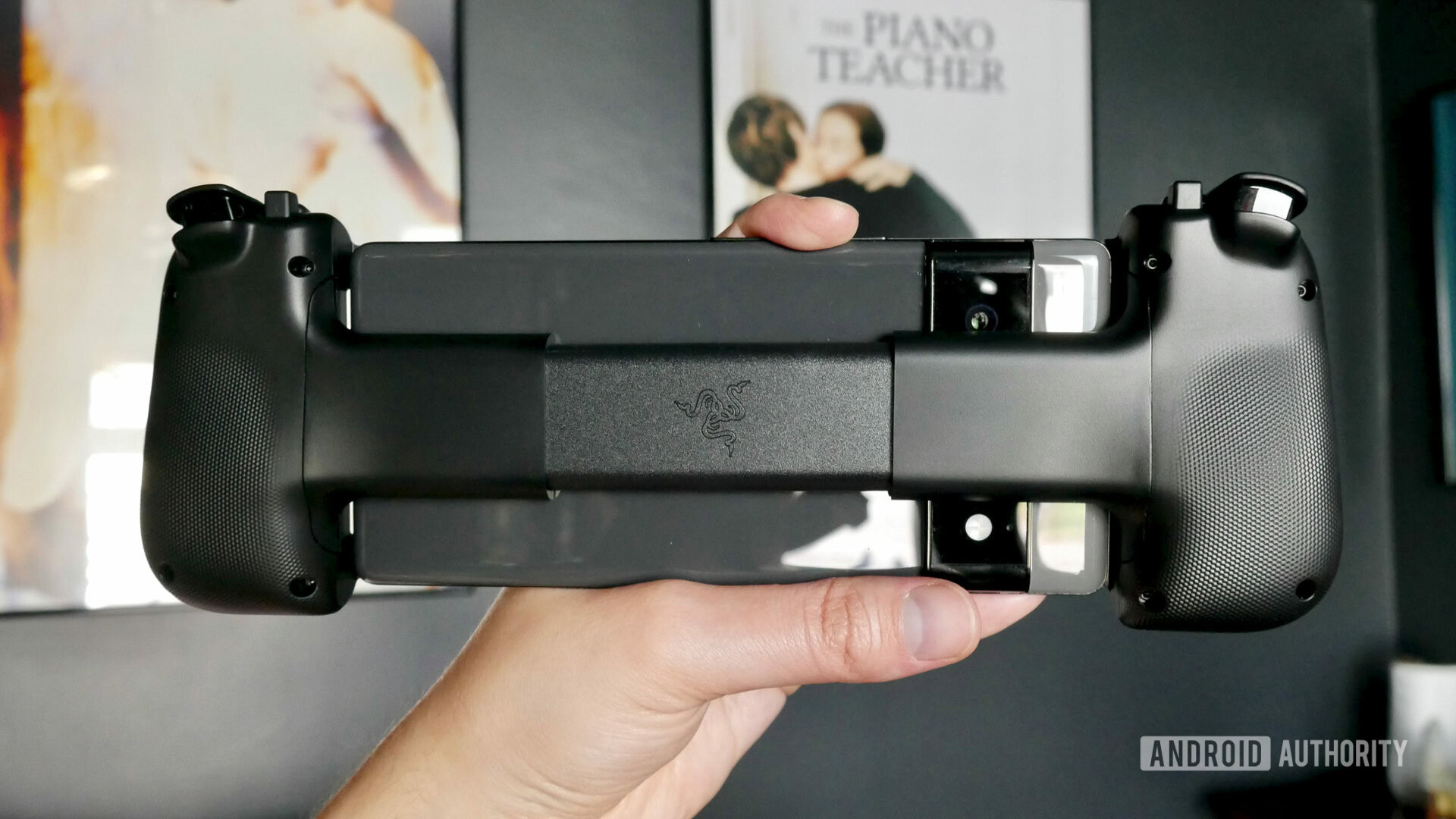
Oliver Cragg / Android Authority
The Kishi V2’s new extendable bridge design may have been borrowed from other telescopic controllers, but aside from one rather glaring caveat (we’ll get to that), it’s absolutely a change for the better.
For starters, Razer’s claim that more phones will be compatible with the second-generation model is absolutely true; I tested it with five different phones — some huge flagships, some smaller budget phones — and they all fit just fine. Even phones with off-center USB-C ports like the Asus ROG Phone 6 can now be awkwardly wedged in if you’re desperate. Heck, even tablet-hybrid foldables like the Samsung Galaxy Z Fold 4 could technically fit in here, though I’m not sure it’d be a pleasant experience. This is all possible because the rounded-off corners that surrounded your device on the Kishi V1 are gone, with phones instead kept in place by light pressure and a subtle protruding lip on either side.
This universal clasp design solves other practical issues with the Kishi V1, too. It’s much faster to clip a phone in and out for a quick game, and while it’s possible to slip the phone up or down very slightly on the left side if you knock it, the increased tension and extended lip stop it from wobbling back and forth during gameplay — a persistent problem I found with the Kishi V1.
The Razer Kishi V2 builds on everything great about the V1 and fixes some (but not all) of its flaws.
The ergonomics are much improved too. The interlocking plastic on the rear of the V1 that would jut into your fingers is gone, replaced with textured grips and a uniform design on each side. The mechanical microswitches, too, offer better travel than the original’s membrane buttons. The tactile L2/R2 triggers, in particular, are an enormous upgrade and no longer feel like they are rubbing up against the plastic frame with every squeeze. The same is true of the D-pad, which is finally rigorous enough for platformers or even fighting games.
Speaking of the buttons, the two additional “M2” macro buttons (located on either side of the triggers) are handy for emulation or for any game that requires additional control options. It also helps that the M2s are small enough and positioned well enough not to be invasive if you don’t need them for the particular game you’re playing.
And finally, we could wax lyrical about the benefits of USB-C controllers over Bluetooth gamepads for this whole review. It’s not a unique benefit of the Kishi V2 specifically, but the barely perceptible input latency and the fact you don’t need to charge it up to play are both traits that make it hard to go back to a wireless pad after you’ve used a telescopic USB-C controller. This is especially true for cloud gaming or remote play, where latency is already a worry if you have a less-than-stellar connection.
What’s not so good?
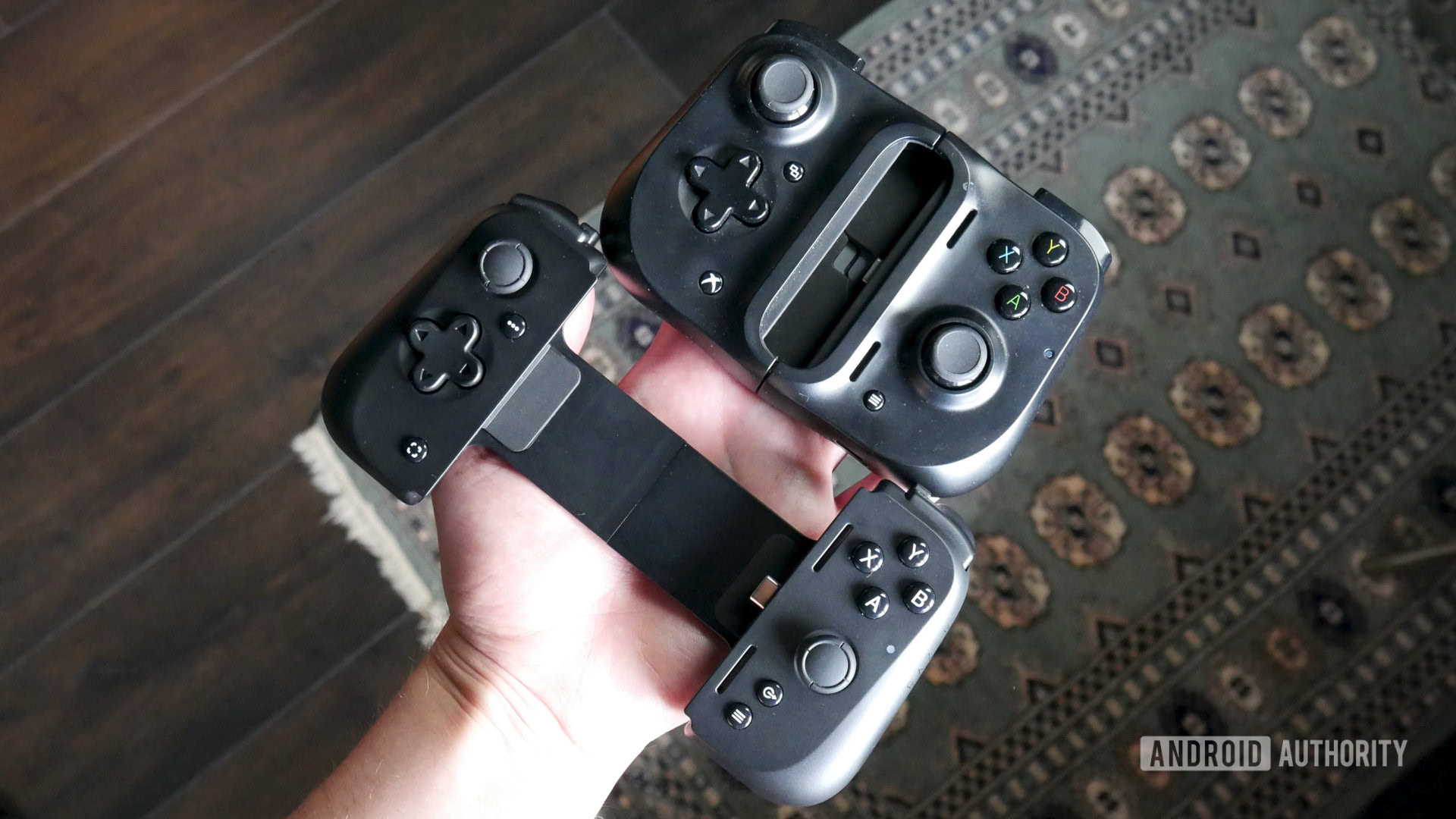
Oliver Cragg / Android Authority
Take one look at the Kishi V2 next to the collapsed V1 (see above) and you’ll likely be able to guess the big drawback of the shift to a universal clamp over a clip. While the Kishi V1 was undoubtedly far less comfortable to hold while playing, the way it could be clipped together into a neat package meant you could happily slip it into a (large) trouser pocket or a bag and not worry too much about any damage to the extendable band. The Kishi V2, meanwhile, is all angles, as there’s no way to collapse the spine. This is true of all controllers in this specific form factor, of course, but it’s a shame one of the Kishi’s biggest selling points — its portability — no longer applies after just one generation. Likewise, with no case in the box — something that perhaps could’ve been included when you factor in the price — there’s not a lot protecting the V2 when you want to pack it away. It sure feels like you could snap it in two if you’re careless about storing it, either at home or on the move.
The buttons certainly feel a lot better, but they sound a lot worse. In particular, the M2s and the four non-ABXY face buttons are distractingly loud. While those particular inputs won’t be used all that often, even the core face buttons and the L1/R1 bumpers have a discernible click that might annoy anyone sitting next to you during a quick subway gaming session. The joysticks received a questionable overhaul too. Instead of the V1’s larger sticks with concave thumb grooves, the V2’s pair are near carbon copies of the Nintendo Switch‘s Joy-Cons. They’re far less springy, but that missing tension and snappy feedback make them less suitable for twitchy aiming in shooters.
The continued omission of a headphone jack is dumbfounding, but the Nexus app is the Kishi V2’s glaring weak point.
The continued lack of a headphone jack port is baffling. Even the few phones that do have 3.5mm ports will find them covered when docked in the Kishi V2, and yet there’s no option for wired audio at all. The grilles on the right side of the controller do a decent job of letting through sound from bottom-firing speakers, but anyone playing on the go will (hopefully) want to keep any virtual explosions to themselves. Minimal input latency is great, but the effect is ruined slightly when you pair it with an audio delay from wireless buds or headphones. Even if you have a pair of USB-C headphones, you’re fresh out of luck as the external USB-C port on the Kishi V2 doesn’t offer audio passthrough. You can charge your phone through this port, but don’t expect much power to seep through as it doesn’t appear to support fast charging protocols.
Last and definitely least is the Kishi V2’s biggest failing: the Razer Nexus app. As previously mentioned, you don’t need the Nexus app, but you will if you want to access the livestream and screenshot functionality (the screenshot button is otherwise redundant), update the firmware, and program those M2 buttons. Sadly, the UI is barren and ugly in an Xbox knock-off kind of way, and it runs at a weirdly low resolution. It also adds a permanent notification to your phone’s tray, which can only be removed within Android’s system settings. In addition, livestreaming is restricted to just YouTube and Facebook, with no option for Twitch, the most popular game streaming platform. The app’s functionality is all free, which is something, but the feature set is nowhere near as comprehensive or as user-friendly as that which Backbone One users get with the free version of its app, let alone those with a Backbone Plus subscription.
And finally, it’s still a shame that PlayStation users can’t officially use the Kishi V2 with the Remote Play app. This is a Sony restriction, so we can’t blame Razer here. Thankfully there are workarounds via the unofficial PS Play app if you’re willing to pay a small fee.
Razer Kishi V2 review: The verdict

Razer Kishi V2
Improved ergonomics • Extended functionality • Responsive gameplay
The 2022 version of the original Kishi is a new take on a proven formula.
The original Razer Kishi is one of the most popular mobile gaming controllers on the market. The Razer Kishi V2 improves on that formula with new buttons, a new app, and a subtly better design.
For those with a big enough budget, the Razer Kishi V2 is the best Android gamepad money can buy… at least for now. Just shy of $100 is a lot to spend on any controller, but as long as you can look past the loss of the V1’s exceptional portability, the V2 is a clear improvement — though perhaps not as much as it should have been at this asking price.
As far as the competition goes for telescopic controllers, the Kishi V2 has superior ergonomics when stacked up against the Gamesir X3 USB-C version ($99), but some may be swayed by the customizable joysticks, and an optional cooling fan. If you’d prefer something closer to the Kishi V1, Razer’s original partner Gamevice has its own version, simply dubbed Gamevice ($59), that is essentially identical and much cheaper — just be aware the number of compatible phones is far smaller than universal telescopic controllers like the Kishi V2.
Want the best Android gamepad in town? The Razer Kishi V2 is it… for now.
Really, though, the Kishi V2’s biggest competition isn’t available to buy just yet. After over a year of asking, an Android-compatible version of the Backbone One ($99) will finally arrive in November, at the same price, alongside a much more useful companion app, and complete with a 3.5mm headphone jack.
Should anyone with a Kishi V1 consider an upgrade to the V2? Unless you’ve bought a new phone that doesn’t fit the original model, I’m not convinced there’s enough here to justify spending $99. For everyone else, in spite of its issues, the Razer Kishi V2 is a fantastic way to transform your phone into as close to a portable console as you can get.
Top Razer Kishi V2 questions and answers
Is the Razer Kishi V2 worth it?
If you can afford it, the Razer Kishi V2 is a fantastic telescopic controller, though it’s not as feature-packed as it could have been for the price.
What phones are compatible with the Razer Kishi V2?
Razer officially guarantees support for many Samsung Galaxy S and Google Pixel phones, as well as the Razer Phone 1 and 2. However, it notes that the “adaptable design will likely be compatible with any Android devices running Android 9.0 or later with similar dimensions to these supported devices.”
What game streaming services are compatible with the Razer Kishi V2?What games can I play with the Razer Kishi V2?Does the Razer Kishi V2 work with iPhone?
Yes, but you’ll need the Razer Kishi V2 for iPhone variant that is expected to launch in the fall of 2022.
Can you use the Razer Kishi V2 as a controller?
The Razer Kishi V2 will only work with a phone docked inside, it cannot be used as a separate Bluetooth controller.
Does the Razer Kishi V2 work with Genshin Impact?
No, sadly the Razer Kishi V2 does not work with Genshin Impact because the game lacks controller support on Android. It should work on iOS with the Kishi V2 for iPhone, however.
How do I pair my Razer Kishi V2?
You don’t need to pair the Razer Kishi V2; slot your phone into the USB-C port and it will work automatically.
Does the Razer Kishi V2 need to be charged?
The Razer Kishi V2 does not need to be charged as it is powered by your phone via USB-C.
Does the Razer Kishi V2 work with a phone case?
If you have a thin phone case, you might be able to use the Kishi V2 with it still on your phone, but it will vary by case and by phone.
Comments
Source by www.androidauthority.com






















